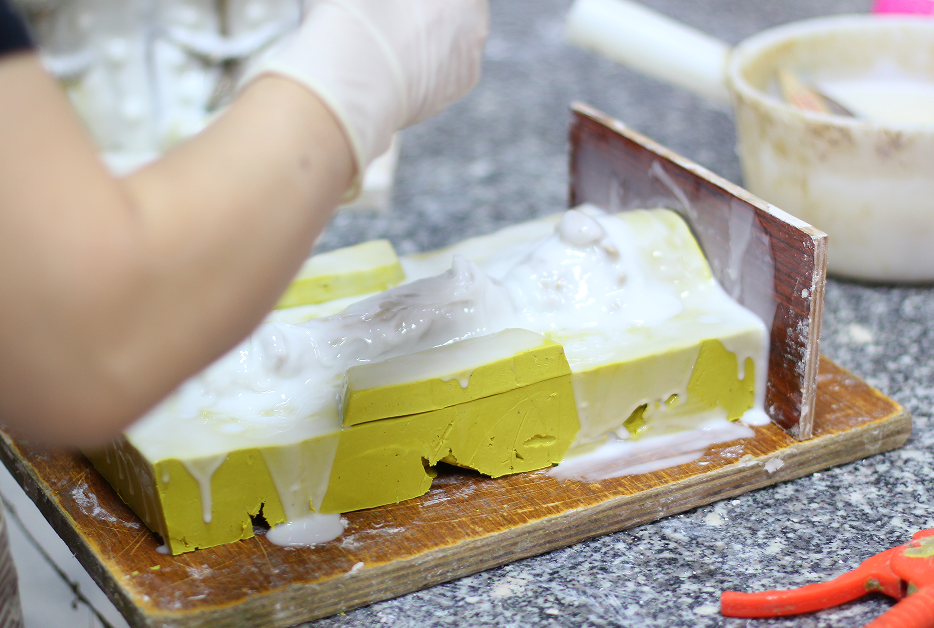
Production of Monroll's lighting | What is lost wax processing?
Lejeune HuWax Mold Processing and Its Application in High-End Brass Products
Wax mold processing, a form of precision casting, is known for producing thin-walled, complex, and finely detailed castings. It is ideal for creating intricate patterns and castings that are difficult to machine, offering excellent dimensional accuracy and surface finish. The process is efficient in small batches, saving both materials and labor.
Dewaxed brass is one of the most expensive types of brass products due to the high level of craftsmanship required. Each piece is meticulously hand-carved and crafted. Many manufacturers, even those with strong capabilities, tend to avoid using dewaxed brass frequently due to its longer production time and higher cost. However, the three-dimensional texture and vivid detail it provides make it a favorite among luxury brands. Dewaxed brass is commonly used in high-end lighting and decorative items, especially in premium French all-brass lamps. It's also found in American-style, candle-style, and modern Chinese lighting designs, often used for accents like animal, figure, or plant motifs, and paired with luxurious materials such as ceramics, glass, and crystal.
Investment Casting Overview
Investment casting, also known as lost-wax casting, is a method in which the surface of a wax model is coated with several layers of refractory materials. Once hardened and dried, the wax is melted away, leaving a mold for casting. This process results in castings with high dimensional accuracy and a smooth surface finish, making it ideal for precise and intricate metalwork, such as brass and other metals. In ancient China, this technique was used for bronze casting and evolved into modern investment casting techniques. The method originated during the middle and late Shang Dynasty and developed over time, becoming the precision dewaxing process we use today.
An example of this ancient craftsmanship is the Zeng Hou Yi Zun dish, a wine container unearthed from the tomb of Marquis Yi of Zeng in 1978. Cast using the lost wax method, this piece is considered one of the finest bronze artifacts of the Shang and Zhou Dynasties and is one of the nine "national treasure" cultural relics from the Marquis Yi tomb. Its complexity has made it impossible to replicate successfully in the more than 20 years since its discovery.
Historical Significance and Modern Use
In ancient China, lost wax casting was used to create complex shapes, with the earliest known examples dating back to the late Spring and Autumn period. The technique was used to produce brass artifacts, including caps and other intricate items. Over time, its applications expanded to include seals, musical instruments, Buddha statues, and other ornamental pieces, especially in minority regions. Today, the lost wax method, or investment casting, remains a key technique for producing detailed metal castings.
The Dewaxing Brass Process
Each dewaxed brass product undergoes at least 11 complex and precise processes, blending traditional craftsmanship with modern precision casting techniques. The main materials used include wax, refractory materials for the shell (such as quartz sand and bauxite), binders (such as water glass, ethyl silicate, and silica sol), and hardeners (like ammonium chloride). The typical steps include wax mold creation, mold assembly, mold refinement, coating, sand application, demolding, roasting, pouring, cooling, sand removal, and cleaning.

——————————————————————————————————————
Email - info@jewellerytop.com
Whatsapp - +8616620433352
Product Collection
Chandelier | Ceiling Lamp | Pendant Lamp | Wall Lamp | Table Lamp | Floor Lamp | Brass Downlight | Interior Decoration | Furniture | Mirror
Baroque & Rococo Design | Maria Theresa Design | High End Crystal Glass Design | Murano Glass Design | Country Design | Classical Design | Modern Luxury Design
